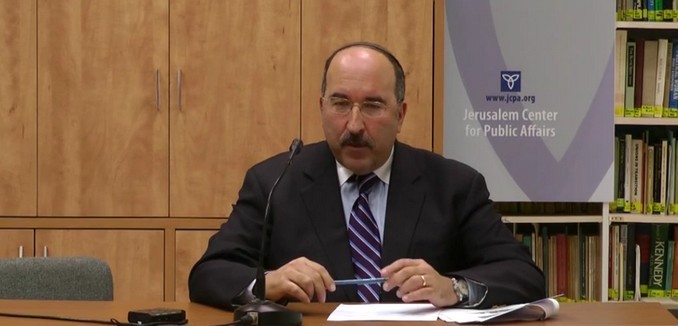The current proposal for the number of centrifuges Iran could keep under a final nuclear deal would not give the West enough to react in case Iran chose to develop a nuclear bomb, according to an analysis written this past Thursday by Dr. Dore Gold, Israel’s former ambassador to the United Nations, for the Jerusalem Center for Public Affairs.
After noting that even allowing Iran to maintain 1,500 centrifuges meant that the P5+1 nations had “dropped the longstanding U.S. policy that Iran eliminate its centrifuges completely,” Gold cites a number of proliferation experts to show how the latest reported offer would give Iran a greatly reduced “breakout time,” the amount of time it would take Iran to enrich enough uranium for a nuclear bomb. Once it has sufficient enriched uranium, the rest of its dash towards a nuclear bomb would be extremely difficult to detect.
In addition to the number of centrifuges that Iran has, there is also the issue of the amount of enriched uranium that Iran has already stockpiled. With enough low-enriched uranium, Iran can make a final push to weapons-grade uranium for an atomic bomb. Robert Einhorn, the former special advisor for nonproliferation and arms control during the Obama administration, has calculated that if Iran uses 1,500 kilograms of low-enriched uranium and inserts it into 2,000 centrifuges, Iran will have one bomb’s worth of weapons-grade uranium in 12 to 14 months.
But from what we know today about the impending nuclear deal, Iran will need much less time to “breakout” to a bomb. According to multiple press reports, Western negotiators have raised the ceiling for the number of centrifuges that Iran will be allowed to have: they have gone from 1,500 to 4,500, and they now appear to be ready to let the Iranians have 6,000 centrifuges. According to Einhorn’s calculations mentioned above, with 1,500 kilograms of enriched uranium and 6,000 centrifuges, Iran can produce enough weapons-grade uranium for an atomic bomb in six months.
David Albright, formerly with the International Atomic Energy Agency, has estimated that with just 2,000-4,000 centrifuges Iran could achieve “breakout” in six months. Others suggest that the breakout timeline is even less than six months. For example, Congressman Ed Royce, Chairman of the House Foreign Affairs Committee, has warned that on the basis of expert testimony given to his committee, should Iran be permitted to keep just 4,000 centrifuges, it would have a breakout time of only three months.
In addition, Gold observes that Iran is in possession of advanced centrifuges, which if utilized for enrichment would shorten its breakout time even further. Last year, Iran tested one of the advanced centrifuges, in violation of the terms of the Joint Plan of Action. The shorter breakout time associated with the latest reported centrifuge limits, according to Albright, “will not allow sufficient time to respond to an Iranian breakout.”
[Photo: TheJerusalemCenter / YouTube ]




